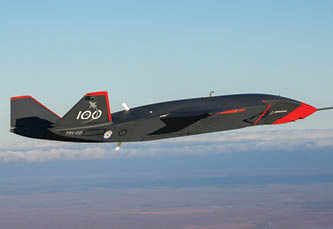by Charles Page
Ronald Elliss Offord was a high flyer, destined for a stellar career in the RAAF. With his personal qualities, intellect, ability and ambition, he was always going to be a great asset to the Air Force. Yet, fate was to intervene on that fateful day at Butterworth.
Ronald was born in Subiaco, WA on 27 January 1935, and educated at 7th Day Adventist School, Perth Boys School, and Perth Modern School from 1951 to 1952. He captained the soccer team, and spent two years in the Army cadets, before joining the Air Training Corps at Perth Modern School, where he captained the ATC Interstate rifle shooting team, won a flying scholarship, and was promoted to Cadet Pilot Officer after topping the course.
Not surprisingly, he was accepted into the RAAF College at Point Cook on 26 January 1953, and after four intensive years of academics, Tiger Moth and Wirraway flying he was awarded his ‘Wings’ and promoted to Pilot Officer. His first posting was to 25 Squadron at Pearce, where he flew the Vampire and the Mustang. Ronald’s Commanding Officer, Wing Commander Les Reading, stated: ‘I consider that this officer has outstanding potential’.
Ronald was next posted to No 2 Operational Conversion Unit, Williamtown, where he joined the first Sabre conversion course on 19 January 1959. The CA-27 Sabre was built in Australia by Commonwealth Aircraft Corporation (CAC) and based on the North American F-86F, but the fuselage was redesigned around the more powerful Rolls Royce Avon turbojet. The air intake was 25 percent larger and armament was upgraded to 2 x 30 mm Aden cannons. The wing pylons could carry rockets, bombs or two AIM-9 Sidewinder air-to-air missiles, plus drop tanks to extend the range. Final production was the Mk 32, which had an upgraded Avon engine. The CAC Sabre equipped five squadrons, No 2 OCU and No 5 OTU.
Ronald graduated with an average plus rating and was posted to 75 Squadron, Williamtown on 1 June 1959. A few weeks later, he had a close call when he was detailed to fly an air defence exercise as No 2 to P/O Bannerman. While flying through an active trough line, the pair encountered severe turbulence, and turned back, but Bannerman was killed when his Sabre fell out of control. Only a week later, Ronald returned from a sortie, and while performing his engine run up on chocks, a ground crewman on his first day at the base, got too close and was sucked into the intake and killed.
Then on 31 August 1959, Ronald was attached to the School of Air Navigation, East Sale, where he came top of the class and passed with distinction on 11 December 1959. He returned to 75 Squadron as navigation officer, and was promoted to Flight Lieutenant.
Ronald’s superiors spoke highly of his impressive personal qualities in their confidential reports. He was described as highly intelligent, loyal, with a strong forceful character, excellent mission planning, enthusiasm and energy. Ronald’s C/O at 75 Squadron stated that with further experience, Ronald would be one of the best squadron commanders of all time.
On 10 February 1961, Ronald was posted to No 78 Wing at RAAF Butterworth, Malaya. Situated on the Malayan coast, opposite Penang Island, the airfield was originally constructed by the RAF in 1939. In 1941, the RAF based a squadron of Brewster Buffalos at the airfield, but they fared badly against the Zeros, and the airfield was soon overrun by the Japanese invaders. The RAF resumed control in 1946, and the base played an important role in the Malayan Emergency from 1950 onwards. In 1956 No 2 Airfield Construction Squadron lengthened and strengthened the runway, and upgraded the base infrastructure. Then in 1958 the RAF transferred control of the base to the RAAF. The base was to peak at almost 5,000 Australian personnel and families, along with schools, hospital, shops, and sports and social facilities.
No 78 Wing comprised No 77 Squadron and No 3 Squadron, both of which had been active in the Malayan Emergency. Ronald was made Wing Navigation Officer, and Wing Survival Officer, as well as his flying duties. In early 1962 No 78 Wing took part in the SEATO tactical air exercise ‘Air Cobra’ mounted from Korat air base in Northern Thailand. Ronald played a major role in coordination, and Air Vice Marshal Jirastitya of the RTAF sent a letter of commendation to be placed on his record. Ronald was promoted to Flight Lieutenant on 10 June 1962. By now he had logged 1800 hours flying time, and with his fine record looked set for a promising career, as Group Captain Rose, O/C 78 Wing, stated, ‘He is a future leader’.
However, on 11 September 1962 he was detailed to fly Sabre Mk 32, A94-958 to Tengah, and Changi, Singapore, for static display in the Battle of Britain Commemoration Day. Ronald would be number two to F/O Robert Murray Raynes.
At 1618 hrs he took off from runway 36, in a pairs formation with Raynes leading, and Ronald slightly behind to starboard. Just after lifting off, they flew through a large flock of birds moving away to starboard. Raynes’ Sabre was not struck, but Ronald’s aircraft suffered multiple bird strikes, with some into the engine intake. Ronald raised his landing gear and flaps, and tried to climb, but with a compressor stall and loss of power, the Sabre sank back down to about 100 feet, and a speed of about 120 knots. Ronald was faced with a stark choice, to stay with the aircraft and crash land or to eject.
Across the airfield, an airman exclaimed, ‘He’s going in’. Then came the sound of the ejection seat firing, as Ronald made a split second decision to eject. The seat rose up well above the fin and then tumbled once completely. Ronald separated from the seat, and his parachute streamed fully, but did not have time to develop and arrest the forward speed and descent.
Flight Lieutenant Fisher observed from the 77 Squadron hangar door: ‘the aircraft struck the ground in a slight descent, with wings level or nearly so. Red flames streaked with black appeared around the aircraft almost immediately’.
The aircraft came down 120 feet from the end of the runway, and carried on for another 1000 feet, shedding sundry components, and the dummy Sidewinder missiles, until it broke through the boundary fence and slid into an irrigation ditch. A fuel fire behind the cockpit was partially extinguished by the water, and fire crews were soon on hand. Although the Sabre looked surprisingly intact, there was substantial damage underneath and a fracture behind the cockpit. Meanwhile, an anxious Raynes flew over the scene and circled around to burn off fuel before landing.
Sergeant Bradbury of Crash One was the first to reach the downed pilot, but there was little he could do. Ironically, the ejection seat came down about 20 yards from the pilot and looked completely undamaged. Although Ronald had ejected, it was outside the parameters (minimum 100 feet and 140 knots) and too low and slow for the parachute to fully deploy. He died on impact from multiple fractures and internal injuries.
Four dead birds, one with a span of 20 inches, were found on the runway. Court of Inquiry recommendations included raising the runway arrester barrier for take offs, systematic bird clearing, a clarified low level ejection procedure, and reviewing the Sabre flight manual. It was also observed that to clear a compressor stall took 12-14 seconds, and Ronald did not have that time. It is possible that if Ronald had stayed with the aircraft he may have survived, as the ‘G’ meter indicated a survivable +8.5.
Padre Sweetman drove from Butterworth to break the news to Ronald’s wife Helen at 6 Jesselton Avenue, Penang. A service funeral with full military honours was held the next day at 1430 hrs, and Ronald was interred at Penang Western Road Cemetery. Helen Offord flew to Perth with their four year old son, David Ronald, and a nine-week-old baby. Ronald Offord is commemorated at the State War Memorial, Kings Park, Perth, and the Subiaco War Memorial. He is also on the Honour Board at Aviation Heritage Museum, Bullcreek, and the Honour Board and Book of Remembrance at 7 Wing ATC HQ, RAAF Pearce. His untimely death at the age of 27, left a bereft family, and deprived the RAAF of a brilliant young officer with great career potential.
Sources: NAA: A12372, O52902 NAA: A703, 400/62/522 | Meteor, Sabre and Mirage – Stewart Wilson
Photo: CAC Sabre Mk 32, A94-958, RAAF Butterworth (RAAF neg G4906)













